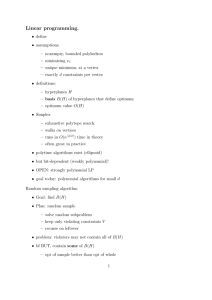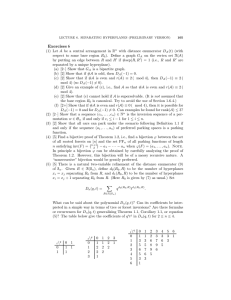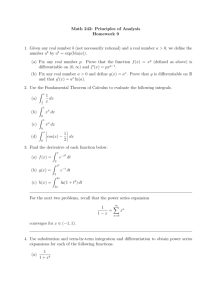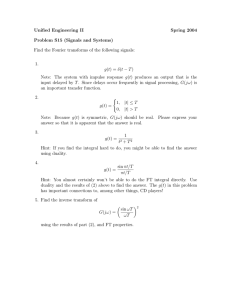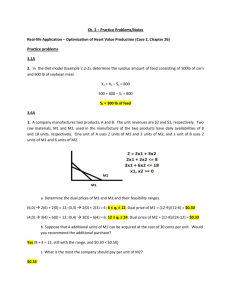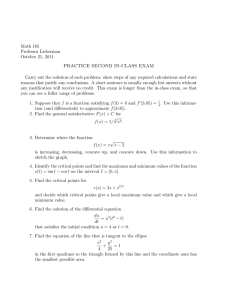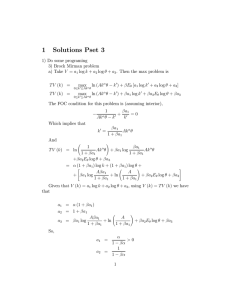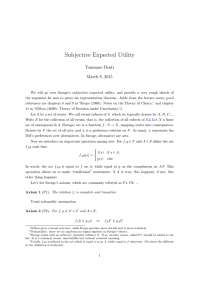Document 13545794
advertisement
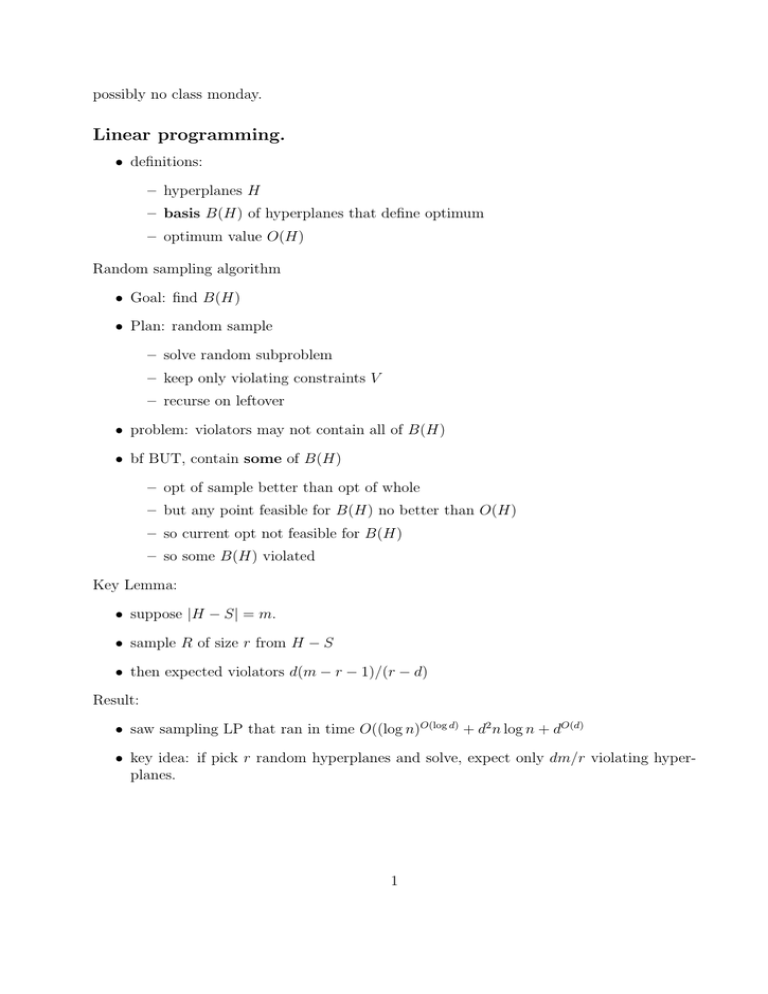
possibly no class monday. Linear programming. • definitions: – hyperplanes H – basis B(H) of hyperplanes that define optimum – optimum value O(H) Random sampling algorithm • Goal: find B(H) • Plan: random sample – solve random subproblem – keep only violating constraints V – recurse on leftover • problem: violators may not contain all of B(H) • bf BUT, contain some of B(H) – opt of sample better than opt of whole – but any point feasible for B(H) no better than O(H) – so current opt not feasible for B(H) – so some B(H) violated Key Lemma: • suppose |H − S | = m. • sample R of size r from H − S • then expected violators d(m − r − 1)/(r − d) Result: • saw sampling LP that ran in time O((log n)O(log d) + d2 n log n + dO(d) • key idea: if pick r random hyperplanes and solve, expect only dm/r violating hyper­ planes. 1 Iterative Reweighting Get rid of recursion and highest order term. • idea: be “softer” regarding mistakes • plane in V gives “evidence” it’s in B(H) • Algorithm: – give each plane weight one – pick 9d2 planes with prob. proportional to weights – find optimum of R – find violators of R – if � wh ≤ (2 h∈V � wh )/(9d − 1) h∈H then double violator weights – repeat till no violators • Analysis – show weight of basis grows till rest is negligible. – claim O(d log n) iterations suffice. – claim iter successful with prob. 1/2 – deduce runtime O(d2 n log n) + dd/2+O(1) log n. – proof of claim: ∗ after each iter, double weight of some basis element ∗ after kd iterations, basis weight at least d2k ∗ total weight increase at most (1 + 2/(9d − 1))kd ≤ n exp(2kd/(9d − 1)) – after d log n iterations, done. • so runtime O(d2 n log n) + dO(d) log n • Can improve to linear in n DNF counting Define • m clauses Complexity: 2 • �P-complete. • Define PRAS, FPRAS Rare events • Idea: choose random assignment, count satisfying fraction • if p small, huge sample size • importance sampling biases samples toward event. Coverage algorithm • given m sets Ai ⊆ V , count ∪Ai • problem: random a ∈ V too rarely satisfies • Idea: Bias sample to create better odds of interesting event – work in Ai – size n known – can sample uniformly from it – dense subset of right size – “canonical” assignment is “first” copy of assignment for given clause – canonical items number same as ∪Ai • Analysis – assignment a, satisfies sa clauses. � – a (sa /n)(1/sa ) = m/n – We know n, so can deduce m – How many trials needed? Till get O(µ�δ ) success ˜ – prob. OK at least 1/m, so O(m) trials suff. • unbiased estimator (expectation equals correct value) Network Reliability 3
